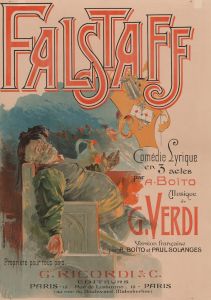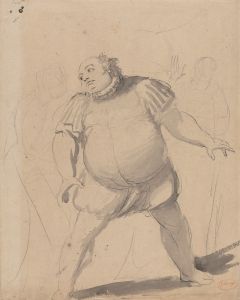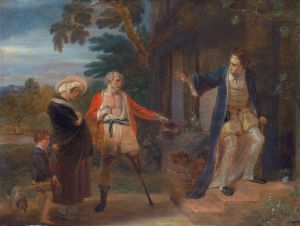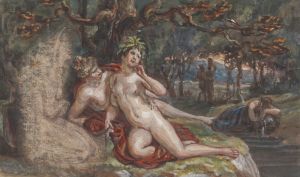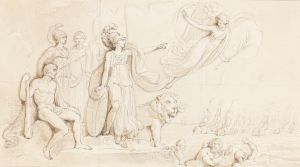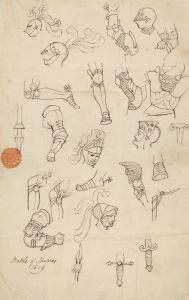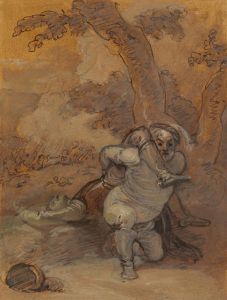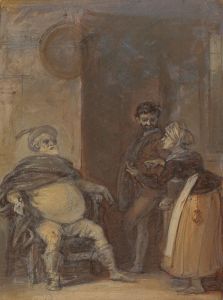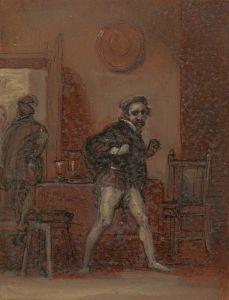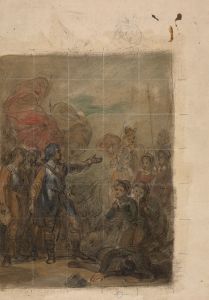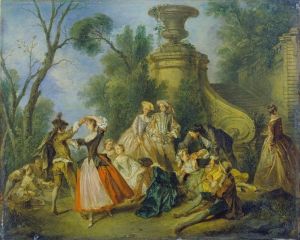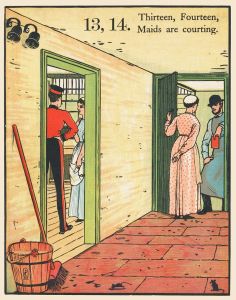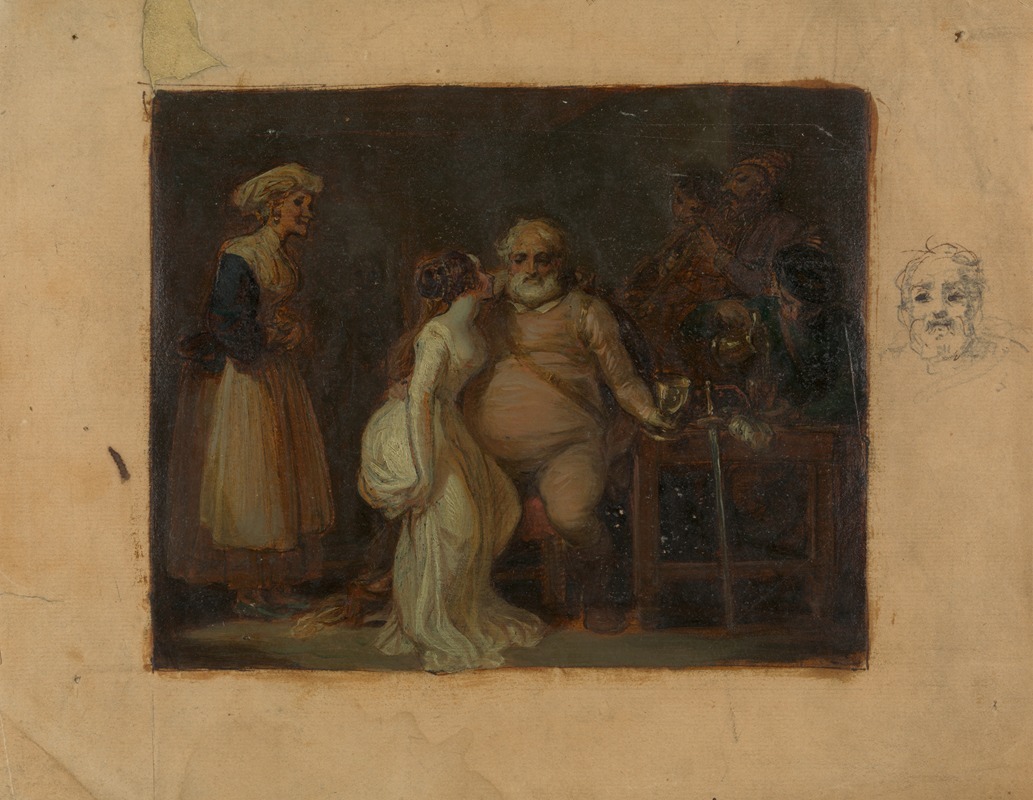
Falstaff in the Boar’s Head
A hand-painted replica of Robert Smirke’s masterpiece Falstaff in the Boar’s Head, meticulously crafted by professional artists to capture the true essence of the original. Each piece is created with museum-quality canvas and rare mineral pigments, carefully painted by experienced artists with delicate brushstrokes and rich, layered colors to perfectly recreate the texture of the original artwork. Unlike machine-printed reproductions, this hand-painted version brings the painting to life, infused with the artist’s emotions and skill in every stroke. Whether for personal collection or home decoration, it instantly elevates the artistic atmosphere of any space.
"Falstaff in the Boar’s Head" is a painting by the British artist Robert Smirke, who was known for his works that often depicted scenes from literature and history. Smirke was born in 1752 and became a prominent figure in the British art scene during the late 18th and early 19th centuries. He was particularly recognized for his illustrations and paintings that brought to life the works of famous writers, including William Shakespeare.
The painting "Falstaff in the Boar’s Head" draws its subject from Shakespeare's plays, specifically the character Sir John Falstaff, who appears in several of Shakespeare's works, including "Henry IV, Part 1," "Henry IV, Part 2," and "The Merry Wives of Windsor." Falstaff is one of Shakespeare's most beloved comedic characters, known for his wit, humor, and larger-than-life personality. He is often depicted as a jovial, rotund figure who enjoys the pleasures of life, such as food, drink, and good company.
The Boar’s Head Tavern is a fictional location in Eastcheap, London, that serves as a setting in "Henry IV." It is portrayed as a lively and somewhat disreputable establishment where Falstaff and his companions, including Prince Hal (the future King Henry V), engage in revelry and humorous banter. The tavern scenes are central to the comedic elements of the plays, providing a stark contrast to the more serious political and historical themes.
In Smirke's painting, the artist captures the essence of Falstaff's character and the lively atmosphere of the Boar’s Head Tavern. The composition likely includes Falstaff at the center, surrounded by other characters from the tavern scenes, possibly including Prince Hal and other frequenters of the establishment. Smirke's attention to detail and ability to convey the humor and vivacity of the scene would have been key elements of the painting.
Robert Smirke's work was part of a broader trend during his time, where artists sought to illustrate and interpret literary works through visual art. This movement was particularly popular in Britain, where Shakespeare's plays were a significant source of inspiration. Smirke's ability to translate the written word into engaging visual narratives contributed to his reputation as a skilled and imaginative artist.
While specific details about the painting "Falstaff in the Boar’s Head" such as its current location or dimensions are not widely documented, Smirke's contributions to art and his interpretations of Shakespearean themes remain appreciated in the context of art history. His works continue to be studied for their artistic merit and their role in the visual culture of the period.
Overall, "Falstaff in the Boar’s Head" exemplifies Robert Smirke's talent in capturing the spirit of Shakespeare's characters and settings, offering viewers a glimpse into the vibrant world of Elizabethan drama through the lens of 18th-century art.





